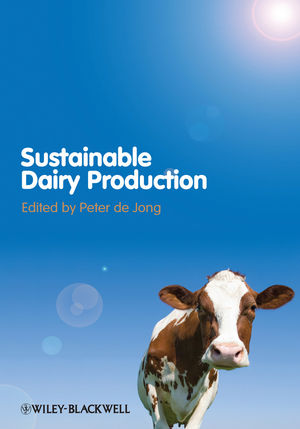Culturally Speaking: Shelf Life

Despite the fact that milk and many other dairy-based beverages are, like most other beverages, subject to some deterioration of quality over time, particularly after they have been opened, consumers expect these products to be of acceptable quality – taste good, look good and be nutritious – any time they consume them.
This is usually characterized as the “shelf life” of the product. About a century ago, before widespread use of refrigeration and pasteurization, the shelf life of milk was measured in a few hours. Today, consumers have become accustomed to two to three weeks for pasteurized milk product shelf life, or several months for ultra-pasteurized (UP), extended shelf life (ESL) and ultra-high temperature (UHT), aseptically packaged products.
Improving dairy products’ shelf life also is motivated by business opportunities. Large retailers see supply-chain advantages if shelf life can be extended to allow greater flexibility in distribution and marketing. Extending the shelf life may allow processors to capitalize on export opportunities for milk and other dairy beverages. Longer shelf life may also make niche-oriented, lower-volume, slower-turnover products more economically feasible.
As a result, processors continue to look to understand what can shorten product shelf life and seek technologies that can enhance it. For pasteurized milk product shelf life, the basics of milk processing continue to be important. Such products are currently limited by post-pasteurization contamination of milk by psychrotrophic bacteria (particularly Pseudomonas spp.), the presence of heat-stable enzymes (proteases and lipases) or presence of thermoduric psychrotrophs (typically bacterial spores that survive pasteurization). Such products can have fruity, bitter, rancid and unclean off-flavors and are subject to coagulation due to growth of these spoilage bacteria.
Ensuring high raw-milk quality supplies (low bacterial counts, low somatic cell counts) and a high level of plant sanitation (with a focus on addressing post-pasteurization contamination) are two keys to good pasteurized milk shelf life, which are under some control of the dairy processor. However, pasteurized milk shelf life will also be influenced by the actual refrigerated storage temperature throughout milk handling and distribution. With these tools and some good people, many plants now can consistently achieve 17- to 21-day shelf life for pasteurized milk.
For ESL milks and dairy beverages, good shelf life (30 to 90 days of refrigerated storage) is achieved by the microbial destruction due to UP, sterilizing all milk contact surfaces effectively, use of appropriate strategies to disinfect packaging materials and maintenance of packaging systems to prevent environmental contamination during filling. In longer-life shelf-stable milk and dairy beverages (UHT and retort sterilized), shelf-life problems have been primarily associated with physical and chemical changes due to heating and prolonged storage (e.g., gelation, sedimentation, off flavors from Maillard browning, lipid oxidation).
Bacterial growth is usually not an issue, provided the process systems are well maintained and sterility of the product is not compromised. U.S. consumers traditionally are more accustomed to a fresh, pasteurized milk taste profile compared to the more heated flavor profile of shelf-stable milk. However, as more consumers turn to flavored milk products and technologies are utilized to reduce the perception of heated milk flavors, the added consumer convenience and greater marketability for retailers of shelf-stable milk products may make them more commonplace.
Nonetheless, using high-quality milk supplies to reduce presence of heat-stable enzymes and heat-resistant spores remains important. Keeping ambient storage temperatures as low as possible will reduce the rate of these changes and maximize shelf-life quality. Additionally, use of additional food ingredients (e.g., phosphates, pectins, polysaccharides) can minimize or prevent undesirable changes associated with higher thermal treatments of processed dairy beverages. Some food preservatives may also be utilized to reduce off flavor development in some food systems.
New emerging technologies may find their way into the shelf-life toolbox of processors. Non-thermal technologies such as pulsed electric field, high-pressure processing, membrane filtration, controlled atmosphere packaging and natural microbial inhibitors may complement existing approaches to extending shelf life of pasteurized, UP and UHT milks and dairy beverages. However, until such systems can be made “fail safe” to ensure the public health, they must be coupled to conventional thermal pasteurization, which have withstood the test of time for food safety.
Additionally, successful use of these technologies in dairy systems will likely depend on the incremental market value (for consumers and retailers) of longer shelf life compared to the properties of milk and dairy beverages processed using existing proven technologies.
For additional articles on extending shelf life of milk and dairy beverages, visit:
• www.innovatewithdairy.com/InnovateWithDairy/Articles/TB_Home_032905.htm
• www.usdec.org/ForeignOffices/newsletterdetail.cfm
• http://www.foodscience.cornell.edu/cals/foodsci/extension/upload/Bact-Milk-Shelf-Life-Doc.doc
Looking for a reprint of this article?
From high-res PDFs to custom plaques, order your copy today!






